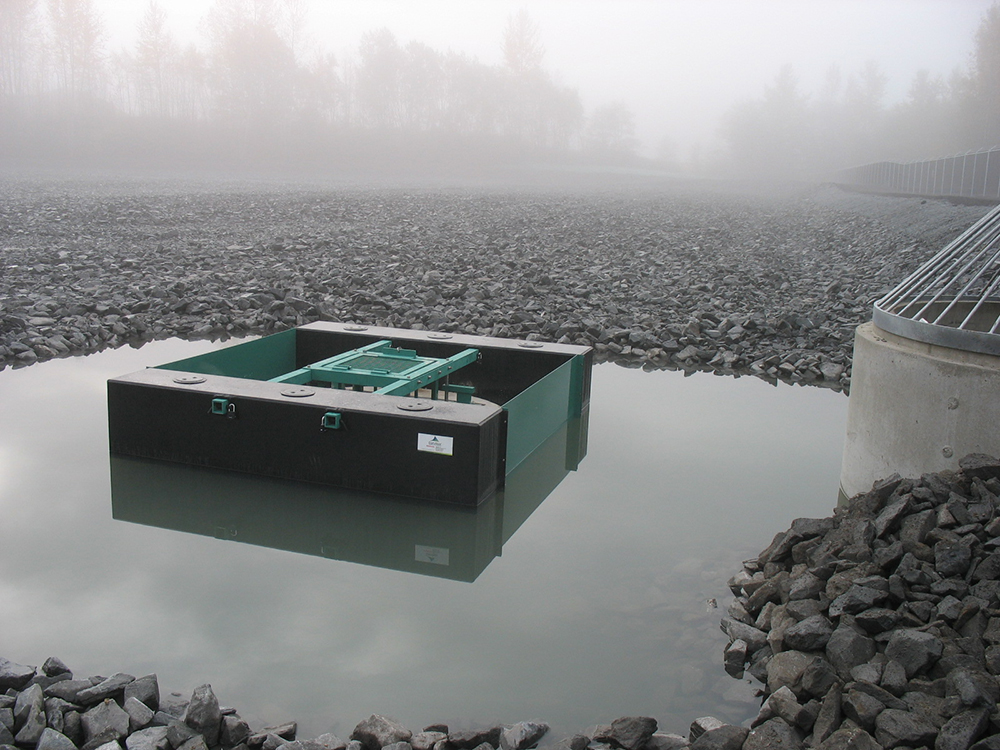The Southwest Stormwater Management Facility was not all it was quacked up to be. It needed to detain up to 22 acre feet of storm runoff, requiring it to be enlarged to seven acres. The Port of Bellingham hired Reid Middleton to design the retrofit improvements, coordinate permitting, and assist with construction of this project at the Bellingham International Airport.
A Unique Retrofit Project
This was a unique retrofit project because of the multiple goals that needed to be achieved. Standard upgrades of existing detention systems usually involve excavation and earth moving within the existing detention basin to achieve a required detention volume. The detention control structure, which typically is a vertically set pipe with holes set within a concrete manhole structure, is modified with different orifice sizes to meet the revised jurisdictional detention requirements of volume and flow rates. That isn’t what we designed.
This particular improvement project, while still needing to meet County requirements for detention, also needed to meet Federal Aviation Administration (FAA) guidelines for detention systems near an airport. The main purpose of the FAA guidelines is to deter the presence of waterfowl near the detention pond. Having waterfowl in proximity to any airplane flight path is a recipe for disaster because the birds can inadvertently collide with an airplane.
Innovative Waterfowl Deterrent for Airport Safety
I, along with other Reid Middleton staff, researched and visited airports to identify constructed waterfowl deterrent measures. Some of the more innovative measures to scare the fowl included netting over the entire pond, filling the pond with floating black balls, and remote controlled boats. After researching the available literature on waterfowl habits and jurisdictional requirements for detention, we proposed to cover the entire pond with quarry spalls (3-inch diameter rock) and use the “Thirsty Duck®” structure.
The quarry spall liner is not attractive to the birds as opposed to a grass lined option that ordinary detention ponds use. The Thirsty Duck structure is a buoyant flow control device. A standard control device requires several feet of water to pond in the pond basin to push water through the drilled orifices in the vertical standpipe. The Thirsty Duck doesn’t require ponded water but instead uses a floating outlet system to provide constant discharge rates regardless of headwater depth. The end result is that water in the pond is discharged within 48 hours of a large storm event (an FAA requirement), and less intense storm events will not even be seen, because ponded water will be hidden within voids of the quarry spall liner. The Thirsty Duck also reduces the amount of detention required by 30 percent, which helped to reduce the maximum water surface elevation of the pond and reduce costs.
This was a satisfying project for me because a lot of research and options analysis was conducted to provide alternatives to the various criteria that needed to be addressed. I was fortunate to have the opportunity to design a detention system with an emerging and innovative technology. The seven-acre sized detention pond is an impressive looking and functioning facility at the Bellingham International Airport.


